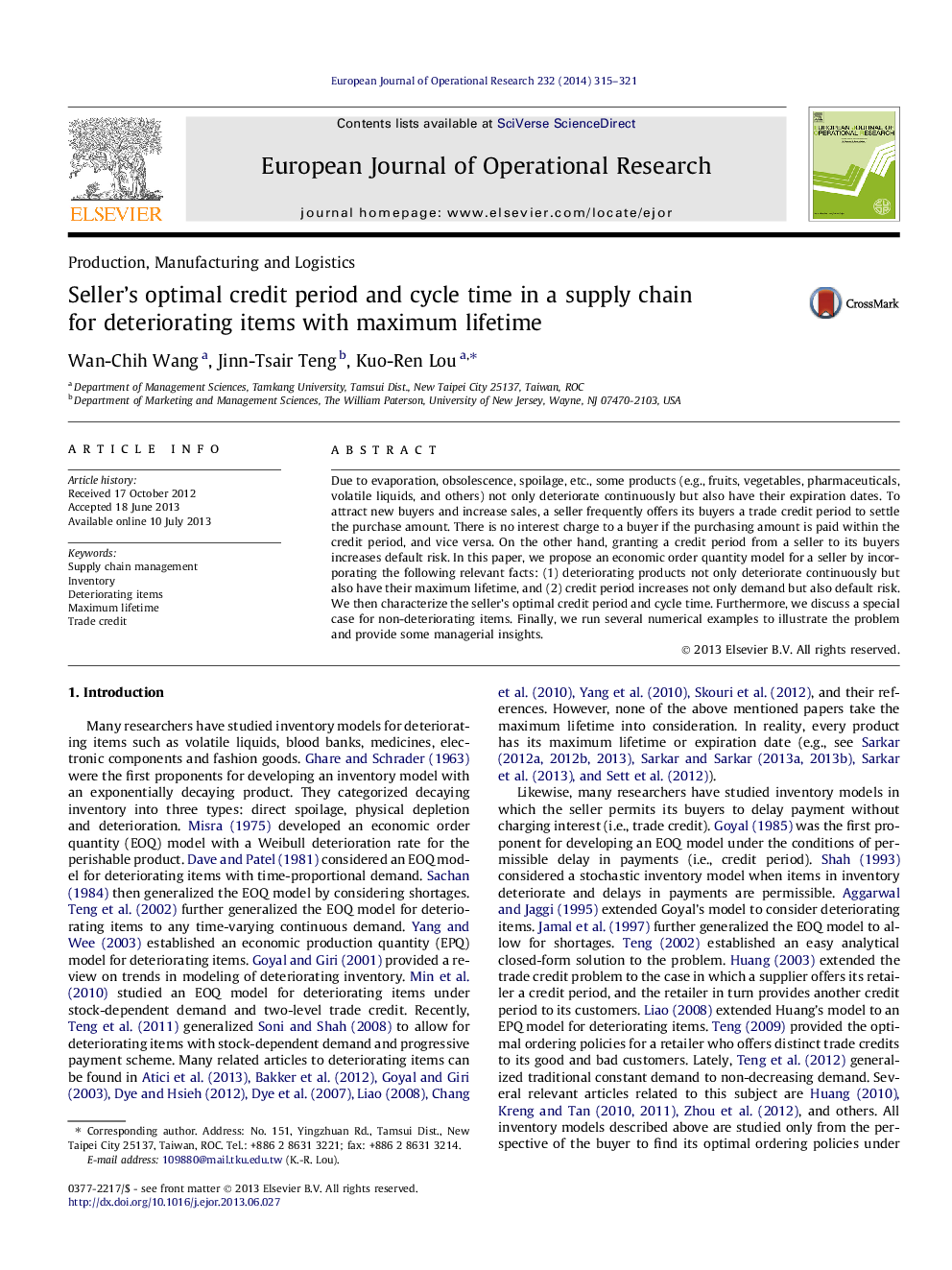| Article ID | Journal | Published Year | Pages | File Type |
|---|---|---|---|---|
| 478264 | European Journal of Operational Research | 2014 | 7 Pages |
Due to evaporation, obsolescence, spoilage, etc., some products (e.g., fruits, vegetables, pharmaceuticals, volatile liquids, and others) not only deteriorate continuously but also have their expiration dates. To attract new buyers and increase sales, a seller frequently offers its buyers a trade credit period to settle the purchase amount. There is no interest charge to a buyer if the purchasing amount is paid within the credit period, and vice versa. On the other hand, granting a credit period from a seller to its buyers increases default risk. In this paper, we propose an economic order quantity model for a seller by incorporating the following relevant facts: (1) deteriorating products not only deteriorate continuously but also have their maximum lifetime, and (2) credit period increases not only demand but also default risk. We then characterize the seller’s optimal credit period and cycle time. Furthermore, we discuss a special case for non-deteriorating items. Finally, we run several numerical examples to illustrate the problem and provide some managerial insights.
Graphical abstractFigure optionsDownload full-size imageDownload as PowerPoint slideHighlights•We determine an optimal trade credit and cycle time from a seller’s perspective.•We consider that trade credit increases not only demand rate but also default risk.•A deteriorating item has its maximum lifetime is taken into consideration.•A special case for non-deteriorating items is discussed.
